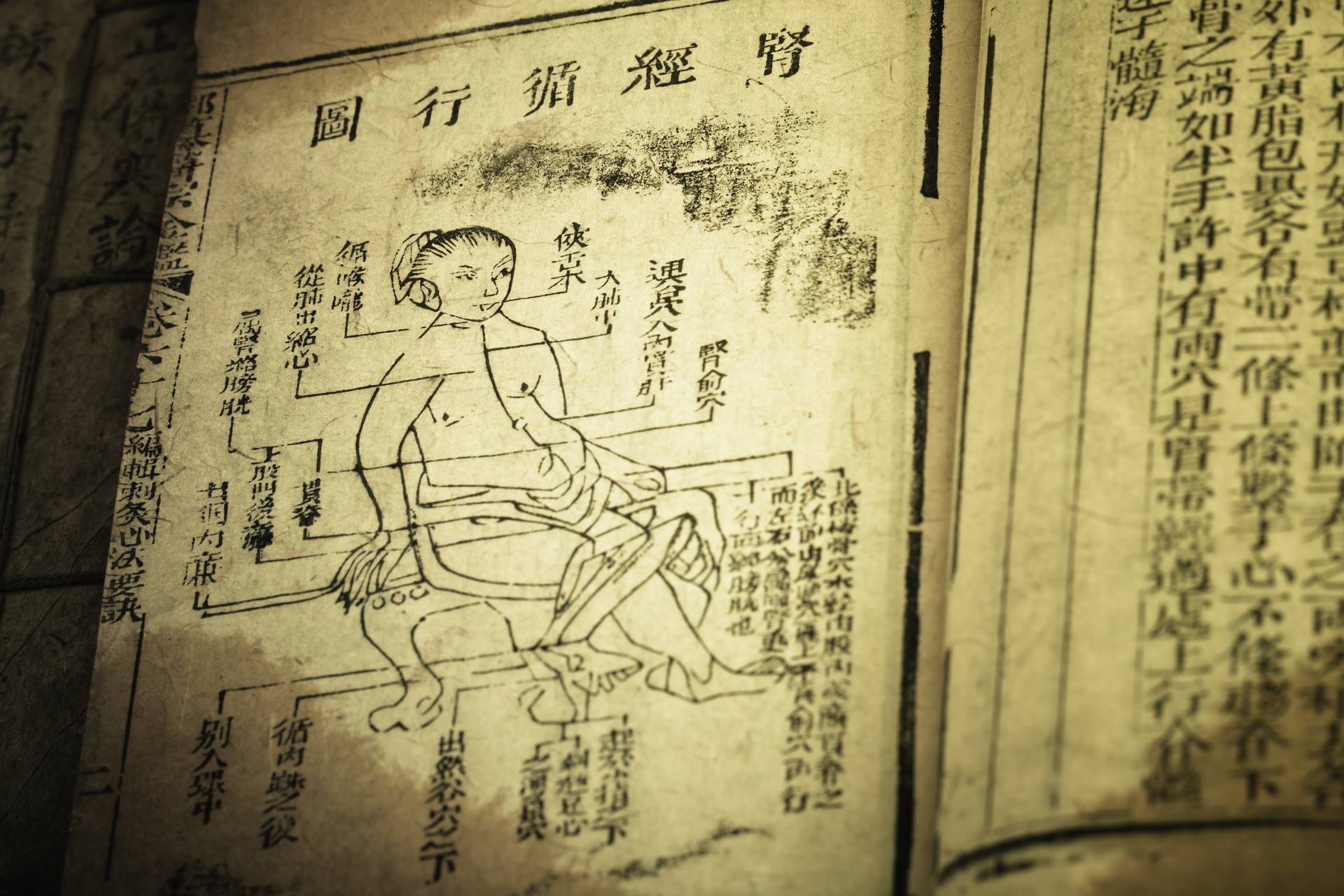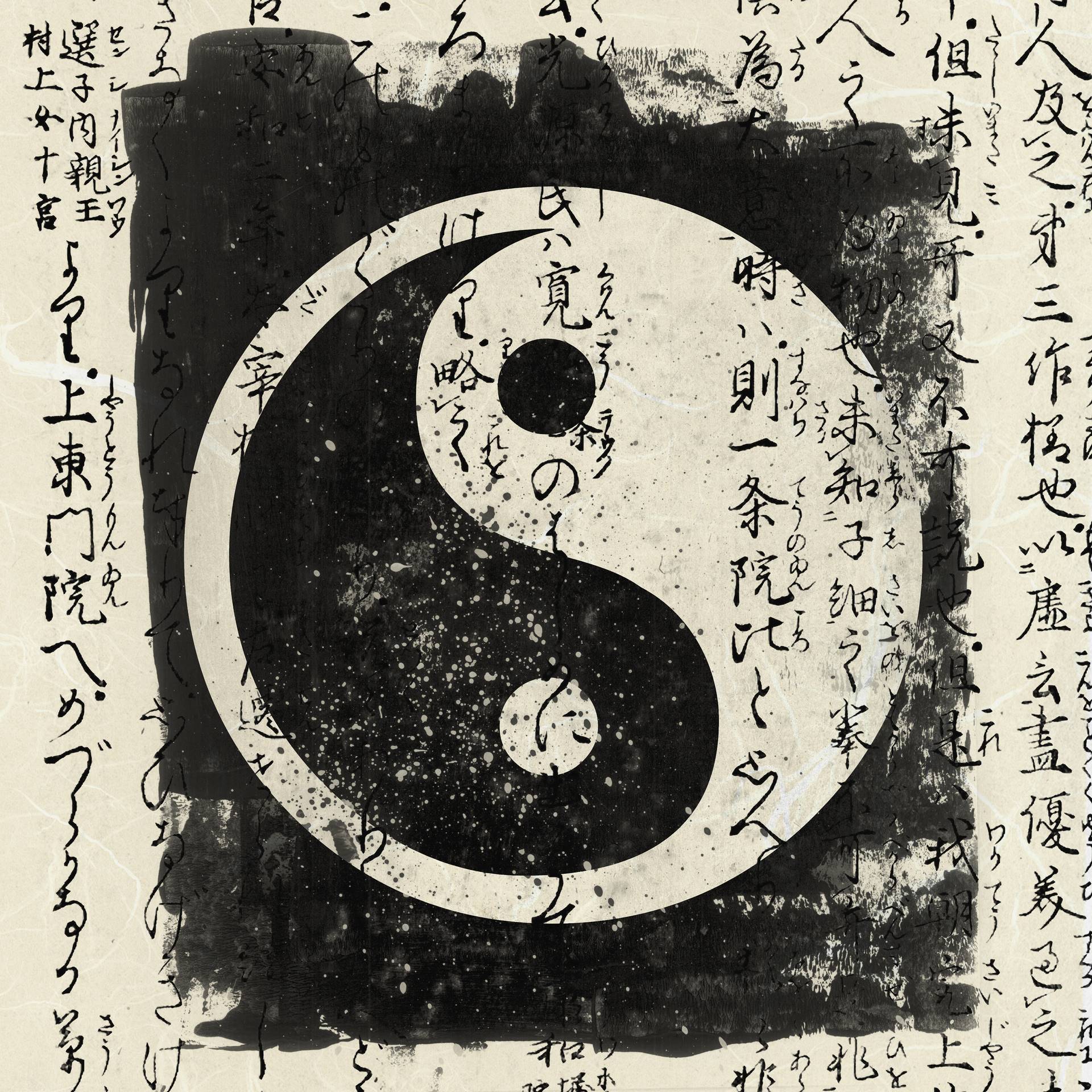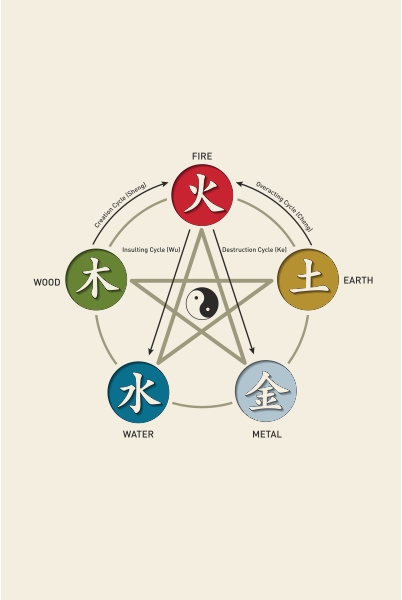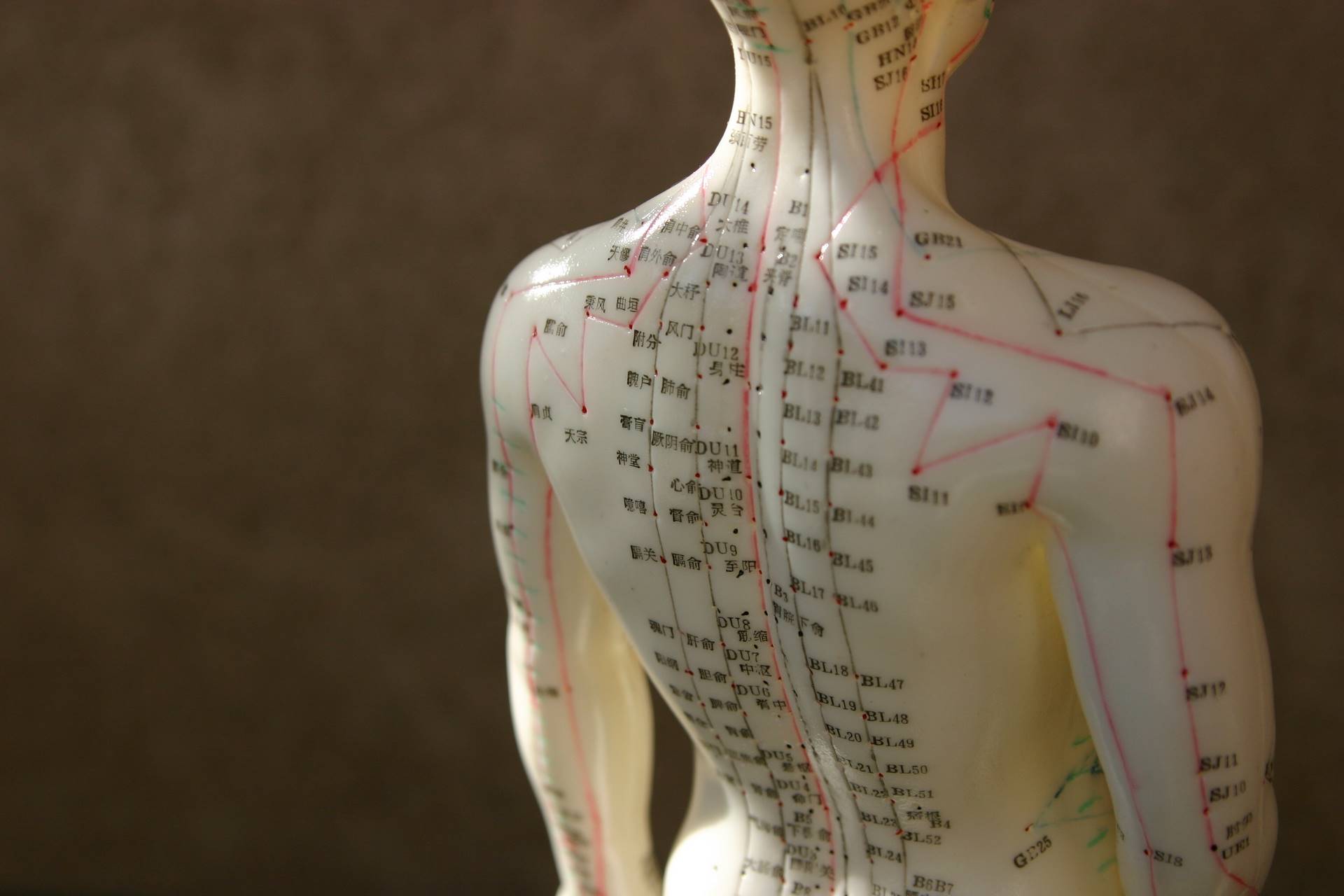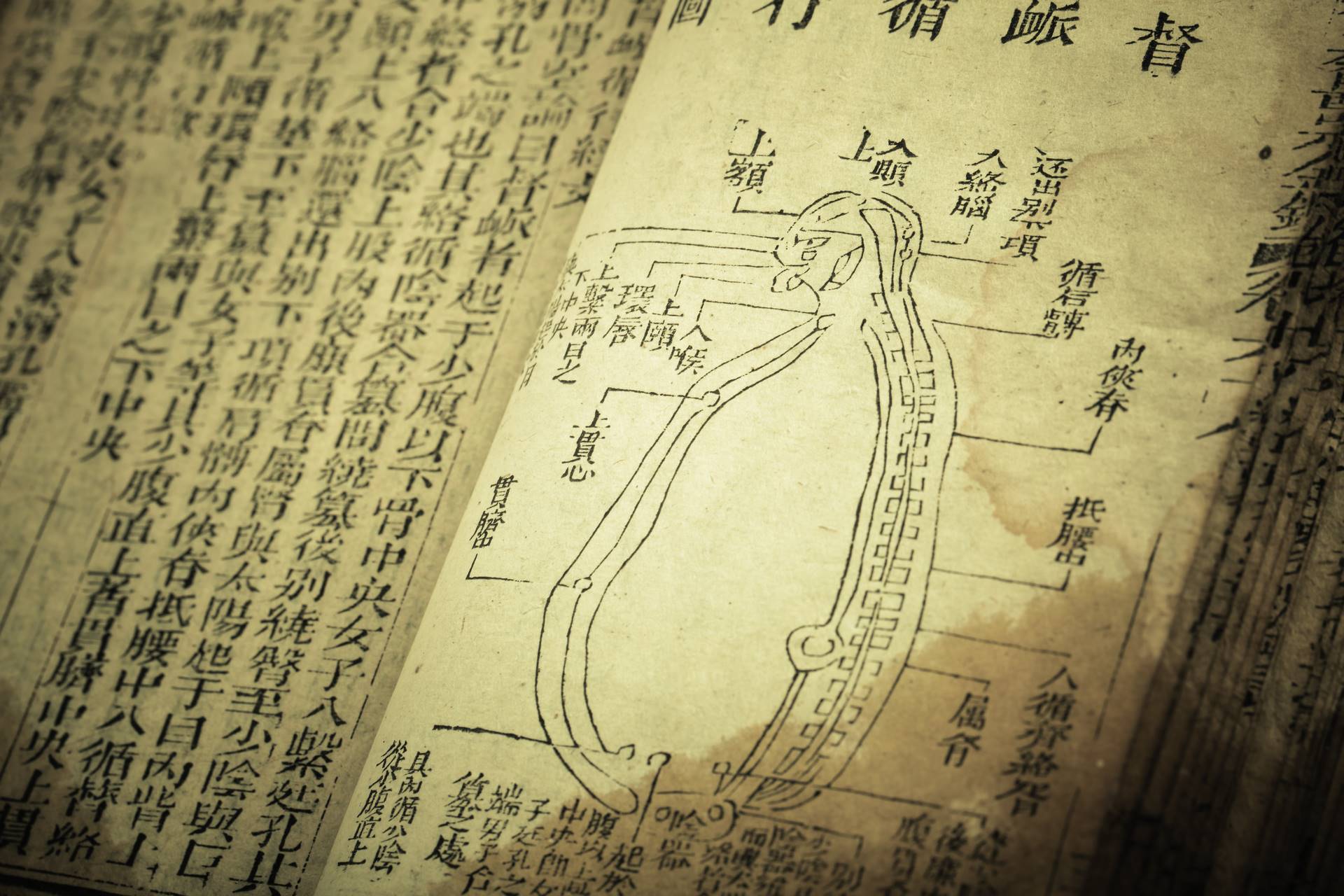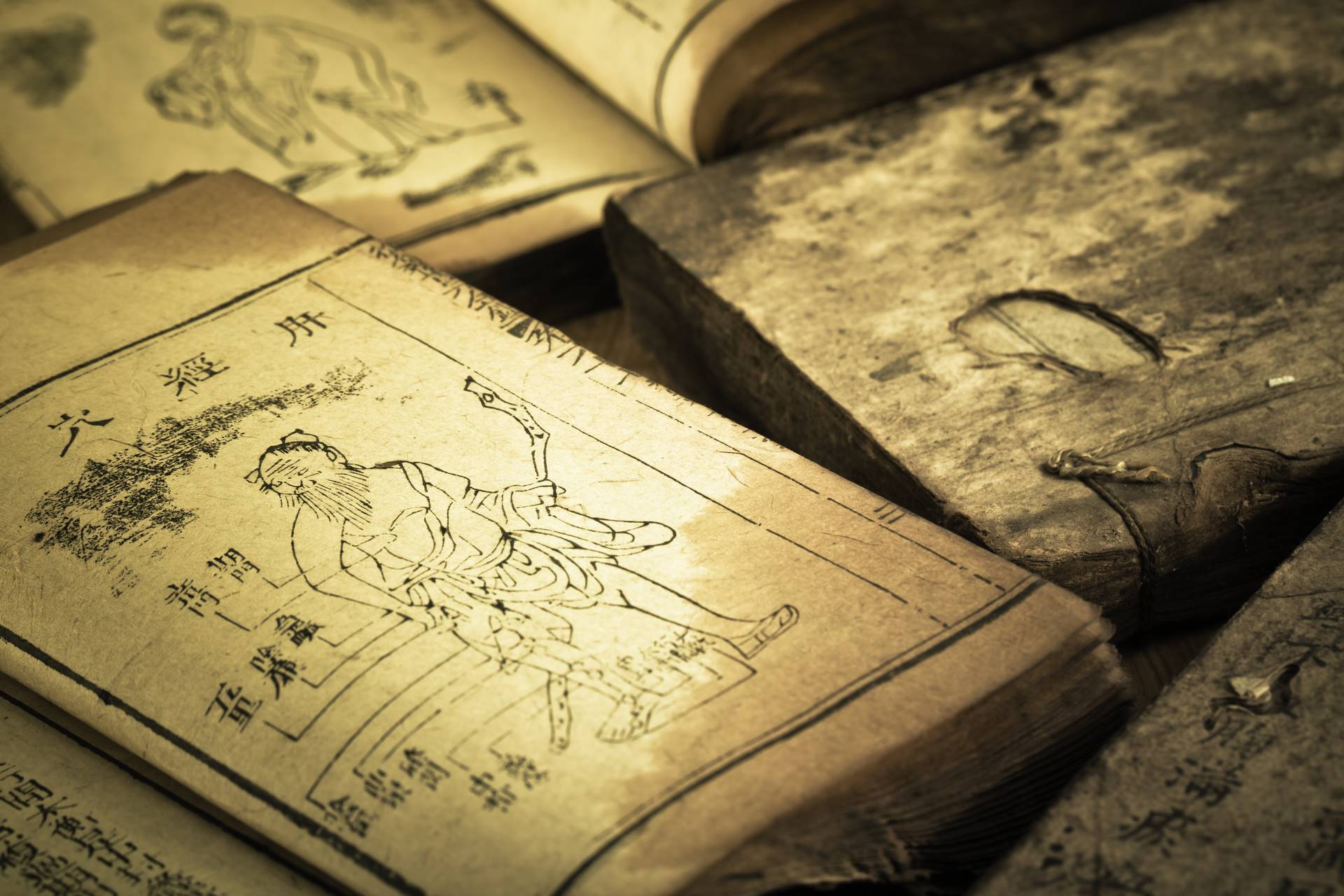Traditional East Asian Medicine, TEAM (brief introduction)
Traditional East Asian Medicine, TEAMis generallyalso called as Traditional Chinese Medicine, TCMor sometimes simplistically as acupuncture.
TEAM is a more appropriate term (than TCM) to define an ancient medical practice of East Asian cultures, that include China (and Hong Kong), Japan, Macau, Mongolia, South and North Korea, Taiwan, and Vietnam.
Acupuncture is also practiced in South Asia, including India, Nepal and Pakistan.
At the philosophical root of TEAM is the belief that an individual (microcosm) is an integral part of the forces of nature (macrocosm).
Eventually, by careful observation of nature, Taoist sages were able to perceive patterns common to both the external environment and the internal climate of theorganism.
Over a period of thousands of years, the cumulative observations of Chinese sages led to an intricate system of diagnosis and healing, as well as the systematization of antique medical knowledge into the science of Traditional East Asian Medicine.
According toTaoistobservations, human life depends on the unobstructed movement and transformation of three main forces, that,in the organism, manifest as three different substances (orenergies), the Three Treasures (Sanbao):
Qi, vitality or lifeforce.
Jing, sexual essence.
Shen, spirit.
We receive these energies from our parents, from the food we eat, and from the air we breathe.
TEAM is a system that seeks to utilize the body’s potential to heal, regardless of what the complexity of the disorder is.
In TEAM the simplest, safest and most cost effective approaches are used starting with lifestyle management (diet, nutrition, physical activity and stress management) as the cornerstone of wellness.
Effective health practices are available to support a healing response, including acupuncture, manual healing techniques (Tuina, Gua Sha, cupping),herbal medicine and mind/body practices such as stress reduction and progressive relaxation (Qigong, Tai Chi and breathing exercises).
TEAM has strong emphasis on preventive care and practical success withconditions that Western medicine is not particularly effective with—inflammatory bowel disease, as well as a range of autoimmune disorders are among examples.
Ancient history of TEAM
If a curious patient or reader becomes interested infinding the age of TEAM somewhere on the electronic web or written sources, he or she would usually be given an indefinite answer of “more than 2000” or, sometimes, more impressive“more than 3500 years”.
The extent of years of Chinese medical existence,though mightseemimpressive fails, however, to reveal the essence that is prescribed to theseearly dates.
Essentially,that Chinese Medicine is the onlytraditional medical system thathas been continuously practiced since early antiquity and has beeneffectively applied in modern medical practice(including Western medicine) bydoctors all over the world.
Geographicallyand climatically China has a range of favorable conditions for human settlement, which took place 500,000 years ago.
A turning point for Chinese Civilizationwas reached at about 1600 BC when China entered the Bronze Age((3300 BC —1200 BC), the period that embraces the reign of the first two Chinese dynasties Xia (2205 – 1766 BC) and Shang(1766 – 1121 BC).
It was then, when Chinese culture took shape as written languages, philosophies and stable socio-political and economic structures gradually emerged.
The rudiments of early Chinese medicine can be traced back to the development of early agriculture in Neolithic(New Stone Ageperiod), beginning about 10,200 BC ending between 4,500 — 2,000 BC.
Just then, farming communities arose (around 7500 BC) in what is now southern China and in the loess-covered lands of the north and northeast, where the well-drained soil of the river terraces was ideal for primitive agriculture.
In the valley of the Yellow River, early agriculture depended heavily on millet, but in the river Yangtze delta area evidence of rice-paddies dates from 5000 BC.
Riceeventually has become the iconic crop in Chinese civilization and Chinese character for rice( , mi)was used to depict, perhaps, the most fundamental phenomenon in Chinese medicine, the character for Qi.
*TEAMcomprises severaltherapeutic approaches(in modern practice nine of them are extensively practiced):.
These did not all develop at the same time and at the same place in China, and all have their own history.
Some form of herbal medicine was practised by all early humans in China, evidence for which dates back more than 1.5 million years.
The origins of acupunctureand moxibustionfor example, according to findings from ancient records, and the evidence of unearthed artefacts, can be dated back to an epoch before the creation of Chinese characters*.
Chinese characters arethe earliest examples of Chinese, are divinatory inscriptions on the oracle bones from the late Shang dynasty(1766 – 1121 BC).
Chinese characters constitute the oldest continuously used writing system in the world
The first evidence of the type of medicine that led to the practice of Chinese medicine that is in use today, however, dates back to about 3000 BC, which was during the New Stone Age..
In remote antiquity peoples prayed when they suffered from disease and at the same time pounded certain parts of the body surface, instinctively, with pieces of stone.
Unexpectedly, the disease was found to be alleviated and, after a long accumulation of such experience and practice, the therapeutic method of the Bian stones finally came into being.
Bian stones were the medical instruments used prior to fine filiform needles.
In 1963, at Toudaowa district, Duolun County (Inner Mongolia), a stone needlewhich had been fashioned by grinding was excavated in the Neolithicruins, and it can be identified as a primitive acupuncture implement.
Stone tools that have been found from this period called "Bian Shi" were specially shaped for making small incisions in the skin, which was the early form of acupuncture.
It is also believed that moxibustion developed around this time.
Along with the invention of the technique of smelting, the making of the needles was gradually improved.
However, stone and bone were not replaced by bronze, iron, gold or silver until the time when the first most prominent Chinese medical bookYellow Emperor’s Inner Canon(Huangdi Neijing) appeared, around2 BC during the reign of Hun dynasty, the golden age in Chinese history(206 BC – 221 AD).
Chinese Medicineisa very ancient practice of medicine, but not the most ancient system of medicine in the world * .
Egiptians gave birth, in so far, to the earliest medical textEdwin Smith Papyrus (named after American Egyptologist who bought it in Luxor in 1862) containing medical information that may date to a time as early as 3000 BC.
The Atharvaveda, a sacred text of Hinduism dating from the Early Iron Age (1200 BC -700AD), is The first Indian text dealing with medicine, like the medicine of the Ancient Near East based on concepts of The exorcism of demons and magic. The Atharvaveda also contain prescriptions of herbs for various ailments. The use of herbs to treat ailments would later form a large part of Ayurveda. In the 1st millennium BC, there emerges in post-Vedic India the traditional medicine system known as Ayurveda, meaning the "complete knowledge for long life".
Its two most famous texts belong to the schools o Chakra and Sushruta born c. 600 BC.
Though stone needles (Bian) and herbal remedieswere employed by ancient men to relieve different ailments since Neolithic,acupuncture,moxibustion and herbal medicineas a medical method has not been systemized until the appearance of the two canonical books:
1) ShennongBencao Jing, Divine Farmer’s Canon of Materia Medica:
Is the first book on agriculture and medicinal plants, here "ben" and "cao" literally mean "tree roots" and "herbs".
Is believed to have been written some timeduring later Han dynasty (ca 221 AD).
Its origin has been attributed to Shennong,the mythical Chinese Emperor of the Five Grains, who was said to have lived around 2800 BC and taught ancienthumans Chinese practices of agriculture and the use of herbal drugs.
Represents theearliest style of Chinese medicine, that came from farmers, since only they knew how to recognize the plants.
Embraces practical tradition of Chinese Medicine, that is, it teaches herbs, since farmers used products that were available to them.
Eventually, Shennong School gave birth to first government authorized pharmacopeia.
2) Huangdi Neijing, Inner Canon of Huangdi or Yellow Emperor's Inner Canon:.
Was written down on bamboo scrolls between the late Warring States period(475-221 BC) and the early Han period(206 BC–221 AD).
Is considered to be the origin, the beginning of Era of TEAM.
Is the most important ancient text in Chinese medicine as well as a major book of Daoist theory and lifestyle.
Represents the first medical theory of Chinese Medicine, before this exemplary work, medical knowledge was not systemized.
Embraces theoretical tradition of Chinese Medicine, that is, it teaches acupuncture, sort of nobility medicine developed and practiced in royal circles, since royalty was not willing to handle farmers originated style of medicine (that is herbalism).
Is composed of two texts each of 81 chapters or treatises in a question-and-answer format between Huangdi(Yellow Emperor) and six of his equally legendary ministers or physicians, most commonly Qíbó, one of his most prominent doctors.
Departs from the old shamanistic beliefs that disease was caused by demonic influences,instead the natural effects of diet, lifestyle, emotions, environment, and age are the reason diseases develop.
Explains the nature of the Universe in terms of three main principles (or forces) such as, Yin -Yang, Qi and the Five Elements(or phases).
These forces can be understood via rational means and man can stay in balance or return to balance and health by understanding the laws of these natural forces.
Man is a microcosm that mirrors the larger macrocosm (universe).
The principles of Yin -Yang, Qi and the Five Elements, the environmental factors of wind, damp, hot and cold,etc. that are part of the macrocosm equally apply to the human microcosm.
The two canonical books have today been the basis of Canonical Chinese Medicine, CCM.
CCM is the foundation of both clinical and theoretical Chinese Medicine as we know it today and is comprised of two main schools:
The Yellow Emperor Huangdi黄帝School of Medical Canons Yi-jingPai醫經派.
The Divine Farmer Shennong神农School of Canonical Formulas Jing-fang Pai 经方派.
Modern history of TCM
In the East , Traditional Chinese Medicine,TCM was born again in the middle of the 20th century following 100 or more years of decline.
This renaissance was due to the need in China, following 20 years of warfare and disorder, for a cheap, practical, safe and simply taught medicine which could serve the population undergoing the massive task of social and economic reconstruction.
In 1982, following nearly 30 years of experimentation and the publication of new editions of the ancient classical texts, a conference was held in Nanjing*to survey the educational climate in traditional medicine.
Its present name means “Southern capital” having been the capital city of six different dynasties, the second largest commercial centre after Shanghai, and the cradle of classical Chinese medicine.
At the conference it was decided to produce a comprehensive set of textbooks, based upon a scientific approach, which could cover all areas ofTCM.
As a result, the newly published educational manuals (as well as translations of these manuals) are extensively employed by doctors and practitioners of TCMall over the world at a present day.
The birth of TCM in the West canbe dated to the early 70’s, in the wake of a new politically sanctioned exchange of information between China and the United States.
In July of 1971, New York Times reporter James Reston travelled to Peking to cover Henry Kissinger's involvement in President Richard Nixon's initiative to 'bring down the bamboo curtain'.
While there, Reston required an emergency appendectomy and his postsurgical pain was treated successfully with acupuncture and moxibustion.
This story he detailed in a front-page article that brought acupuncture and Chinese medicine to the forefront of American minds (Reston 1971).
Since then there appeared in the press a number of anecdotal descriptions of surgery without anaesthesia being performedin China.
A technique called acupuncture was used, whereby slender needles pierced the skin at predetermined area on the body, the patient being fully awake during the procedure but not feeling the scalpel.
Over the next several years ancient technique of acupuncture enjoyed a brief surge of popularity in the United States.
This sudden enthusiasm, however was quickly followed by a backlash within the medical establishment, which, unable to obtain "scientific proof" of claims made by acupuncture proponents, was ready to abandon it and to forbid its practice in the United States.
This attempt was unsuccessful, however, and investigations of the possible application of acupuncture to Western medicine have continued.
While acupuncture and other traditional Chinese medical methods are likely to have been used for decades in the US by Asian immigrants as part of their domestic care, it was first formally taught by Dr. James Tin Yau So at the New England School of Acupuncture (NESA) in 1976.
Dr So was the principal and founding instructor of the school and is considered to be the Father of American Acupuncture.
The evidence now indicates thatacupuncture can induce analgesiaand that its use is associated with measurablephysiological changes.
Medical reviews show that acupuncture is slowly beginning to be integrated into certain areas of Western medicine (Journal of theAmerican Medical Association 1998; 280: 1518-1524).
Today, TCM is commonplace in North America and most countries in Central Europe.
Chinesepatent medicines (formulas) are sold widely, and a number of Chinese herbs, like ginseng, Astragalus, and Dong Quai, have become well known.
Many western physicians have taken courses in traditional Chinese acupuncture.
Practitioners of TEAM are in demand to join the staffs of integrative medical facilities and healing and wellness canters.
The scientific research on therapeutic methods of TEAM can be accessed on free search engine for medical professionals(see Links).
TEAM has also been experiencing a far greater change rather than its acknowledgement by Western community,explicitly, therenaissance of its ancient philosophical and therapeutic approach towards human physiology, as embraced by Canonical Chinese Medicine, CCM.
CCM is the style of Chinese medicinepracticed along the tenets codified in the Western and Eastern Han Dynasty’s(ca. 200 BC- 200 CE) medical classics.
Proponents of CCMstrongly believe that this early medicine is overlooked due to communist medicine, where ethereal substances such asShen, Yin -Yang were considered as unorthodox to Maoisteducation.
CCMdoes not practice TCM and does not believe inmodernization of Chinese medicine, where models of classical herbal medicineand acupuncturehave sometimes been reduced to a mere search of acupuncture points and herbal formulas to treat specific symptoms or diseases.
According to CCM human body (in Western prospective this whould imply human DNA) and weather patterns (this whould also imply mechanisms of pathogenesis)remain unchanged throughout the history of human existence.
CCM, however, recognizes the necessity of “scientific proof” based medicine.
TEAM chronology
http://www.metmuseum.org/toah/hd/chem/hd_chem.htm
see also the chronology of the Chinese Dynasties
The properties of plants by experimenting upon his own body.
After, in one of his tests, he ingested the yellow flower of a weed that caused his intestines to rupture before he had time to swallow his antidote tea: having thus given his life for humanity, he has since received special honour though his worship as the Medicine King.
*Stone Age, Neolithic (9300 BC – 3300 BC)
* beginning of practice of Chinese medicine ( implication of stone /bone needles and herbal remedies) →
*Bronze age (3300 BC - 1200 BC)
*stone and bone needles are improved and replaced by bronze, iron, gold or silver
* medical knowledge is conveyed from a minister to a disciple among the nobility and from a farmer to his family members in the agricultural communities
* Xia Dynasty( unconfirmed, 2205 -1766 BC )
* early Chinese dynasty, mentioned in legends but of undetermined historicity
* Shang Dynasty (1766 – 1121 BC)
* first recorded Chinese dynasty for which there is both documentary and archaeological evidence
* Chinese writing began to develop
* Zhou/Chou Dynasty( 1121 – 256 BC)
* during the beginning of thisperiod nobility drew its support from communities of craftsmen working in bronze, jade, wood , stone, ceramics and textile
* farmers working in the fields continued to work with stone implement raising, tice, millet, barley, hemp and raising pigs, poultry and silkworms
* towards the end of the period , the old social order began to collapse, a new group of government administration (shih)emerged. * a leading figure among this group Confucius (551 -479 BC), formulated a new ethos.
* Qin Dynasty (255 -206 BC):
* first two (so farknown) ancient books on the meridians:
* the Moxibustion Classicon the Eleven Meridians of the Foot and Hand
* the Moxibustion Classic on the Eleven Meridians of Yin and Yang
* from their content we can get a glimpse of the theory of the (meridinas) Jingluoat an early stage
* mention over 450 prescriptions and over 200 separate items of Materia Medica
* Iron Age (1200 BC – 800 AD)
* Han Dynasty (206 BC – 221 AD)
* the study of acupuncture and moxibustion was already fully mature, laying a theoretical basis for its later academic and scientific growth and development.
* Chinese medicine is systematized: appearance of the two canonical books:
* Divine Farmer’s Canon of Materia Medics
* Huangdi Neijing, Inner Canon of Huangdi or Yellow Emperor's Inner Canon
* Six Dynasties (220-589)
* Three Kingdoms(220–265), Jin Dynasty (265 – 420 AD)
*Systematic Classic on Acupuncture and Moxibustion 256-260 ADbyHuangfu Mi,famous medical doctor:
* the theories of the Zangfu(orinternal) organs, and meridians and collaterals are discussed
* the acupoints are described according to differing parts of the body—head, face, chest, abdomen, back, etc.
* 349 points are summarized on the basis of the Neijing along with their locations, indications and methods of puncturing and manipulation, various other techniques, precautions and contraindications, and acupuncture and moxibustion prescriptions for commonly seen diseases.
* this book serves as a link between the Yellow Emperor's Book of Medicine and later generationsof acupuncture and moxibustion literature
* Eastern Jin Dynasty (317-420 AD)
* Prescriptions for Emergencies by famous doctor Ge Hong
* contains 109 prescriptions for acupuncture and moxibustion treatment, 99 of which specifically involve moxibustion
* this attracted people's interest, and consequently moxibustion later developed greatly as a therapy
* Tang Dynasty (618-907AD)
* Prescriptions Worth a Thousand Gold Coin around AD 650-652 by Sun Simiao
* explainationof the method of selection, and application, of the"ah shi points"
*Charts of Three Views
* thetwelve regular meridians and eight extra meridianswere illustrated in various colours andshown separately anteriorly, posteriorly andlaterally.
* he especially advocated moxibustionin the prevention of disease—making a greatcontribution to the preventive medicine of latergenerations.
* The Medical Secrets of An Official iAD 752 by Wang Tao
* a record ofin which a numerous of moxibustion methods,of varying schools
* played an active role in popularizing moxibustion therapy
* Sui (581-618) and Tang (618-907) Dynasties
* the Imperial Medical Bureauwas established responsiblefor medical education
* the Department of Acupuncturewas one of the faculties of medical specialities, in which there were professors of acupuncture, assistant professors and instructors in charge of the teaching work
* this shows the great importance attached to acupuncture during that period
* Northern Song Dynasty(960 – 1127)
* anIllustrated Manual on Points for Acupuncture andMoxibustion on the New Bronze Figure byWang Weiyiwas set up, inscribed,on stone tablets erected in the capital.
* were intended for students to read and use to make rubbings from
* among these inscriptions were the locations of the 354 acupoints, with their related meridians and indications, all described and revised
* next year (AD 1027),two bronze figures, designed by Wang Weiyi, were manufactured
* these were the earliest models for acupuncture and moxibustion learning and played an important role in the teaching ofthe jingluo and the acupoints.
* Yuan Dynasty (1231-1368)
* textual research (by Hua Shou ) on the pathways of Jingluo,as well as their relationship with the acupuncture points, also held that Ren and Du meridians, although extra meridians, yet had their own points and should be mentioned together with the twelve regular meridians
* Art Exposition of the fourteen Meridians(1341)
*identified 14 meridians, systematically expounded the meridians' courses and their related acupoints, thus facilitating the study of the meridians for later generations
* Ming Dynasty (1368-1644)
* acupuncture and moxibustion reached their greatest period of flowering
* Compendium of Acupuncture and Moxibustion(1601) by Yang Jizhou:
* has a rich and varied content
* is compiled on the basis of:
* theSecrets of Acupuncture And Moxibustion for Health Carewhich was handed down in his family
* collection of other acupuncture and moxibustion works from past dynasties and
* by his ownpractical experience
* is another complete summary of the scienceof acupuncture and moxibustion, following onthe tradition of the Yellow Emperor's Book ofMedicine and Huang Fumi'sSystematic Classic of Acupuncture and Moxibustion
* is still a mainreference book for the study of acupunctureand moxibustion today
* A Classic of Effective Treatment (1425) written by Chen Hui
* A Complete Collection ofAcupuncture and Moxibustion (1439) by Xu Feng,
* An Exemplary Collection of Acupuncture and Moxibustion (1529) by Gao Wu
* Questions and Answers Concerning Acupuncture and Moxibustion (1532) by Wang Ji
* Research on the Eight Extra Meridians (1578) by Li Shizhen
* all books formulatingdifferent views and schools of thought,but each exerting a tremendous influenceupon the development of acupuncture andmoxibustion
* Qing Dynasty (1644-1911)
* Golden Mirror ofMedicine (1742) by Wu Qian, with a chapter entitled Essentials of Acupuncture and Moxibustion in Verse
* Collection of Acupuncture and Moxibustion (1874) by LiaoRunhong
* they put forth few new ideas
*by the end of the Qing both acupuncture andmoxibustion gradually began to decline.
* in 1822 the authorities of the Qing Dynasty declared an order abolishing acupuncture and moxibustion departments from the Imperial Medical College
* this was on the pretext that "acupuncture with needles and moxibustionwith burning moxa, are unsuitable for service to the emperor" and thereafter some doctors regarded herbal medication as superior to acupuncture
* following the Opium War in 1840, the aggressive attitude of the imperialists, with the establishment of missionary hospitals, medical colleges, and schools of western medicine, led to discrimination against TCM
* this meant that TCM—including acupuncture and moxibustion—declined to a critical level
* however, because of their advantages of marked efficacy, economy and convenience, and because of the great need of the Chinese labouring people for medical care, acupuncture and moxibustion gained a chance to spread among the folk people in spite of later restriction by the Guo Ming Dang Government
* at the same time, many high-minded people and acupuncturists made unremitting efforts to protect and develop acupuncture and moxibustion, setting up acupuncture and moxibustion associations and schools.
* People's Republic of China(since 1949)
* the Chinese Communist party has attached great importance to the inheritance and development of this legacy of TCM and pharmacology
* a rejuvenation of interest in acupuncture and moxibustion
* Chinese medical colleges and hospitals, open faculties and departments of acupuncture and moxibustion, and special research institutes, have been set up; and these have done a great deal, achieving successes in the teaching of this science, in clinical treatment and in scientific research
*in the thirty years or more since the founding of the New China, a large number of acupuncture and moxibustion works have been published
* including a unified textbook of acupuncture and moxibustion for higher level students in the medical colleges, modern language versions of classics, such as the Yellow Emperor's Book of Medicine, the Classic of Medical Problems, the Systematic Classic of Acupuncture andMoxibustionand the Compendium of Acupuncture andMoxibustion
*over 10 000 monographs have been published in journals all over the country, and these have greatly enriched the science of acupuncture and moxibustion, and facilitated its study
* very important research work has been made on the real nature of the meridians Jingluo
* researchhas been made into the phenomenon of the propagation of needling sensation along the meridians (PSM), the route of the PSM, the correlation between the viscera and the body surface, and the morphological basis of the meridians
* acupuncture and moxibustion were also disseminated to foreign countries long ago
* in the 6th century, they were both introduced into Korea and books such as Huang Fumi'sSystematicClassic of Acupuncture and Moxibustion were taken there as textbooks
* in AD 562 Zhi Cong of Wu County in China brought the Ming Tang Charts of Acupunctureand Moxibustion, the Systematic Classic ofAcupuncture and Moxibustion and other medical books to Japan
* in AD 701 acupuncture and moxibustion were set up as specialties in Japanese medical education, and indeed colleges and schools of acupuncture and moxibustion have been in Japan up to the present time, deeply appreciated by the Japanese people.
* at the end of the 17th century
* acupunctureand moxibustion also spread to Europe, and centres involved in research into acupuncture and moxibustion have been established there along with the holding of international conferences and seminars
* in some provinces and cities in China international training centres of acupuncture and moxibustion have been established, to
which large numbers of foreign students come to be trained as qualified acupuncturists
* the Emperor of the Five Grains Shennong is among the group of variously named heroic persons and deities who have been traditionally given credit for various inventions
* these include the hoe, plow (both leisi style and the plowshare), axe, digging wells, agricultural irrigation, preserving stored seeds by using boiled horse urine, the weekly farmers market, the Chinese calendar (especially the division into the 24 jieqi or solar terms), and to have refined the therapeutic understanding of taking pulse measurements, moxibustion, and to have instituted the harvest thanksgiving ceremony (Zhaji Sacrificial Rite, later known as the Laji Rite)
* according to some versions of the myths about Shennong eventually died as a result of his researches into the properties of plants by experimenting upon his own body
* after, in one of his tests, he ingested the yellow flower of a weed that caused his intestines to rupture before he had time to swallow his antidote tea: having thus given his life for humanity, he has since received special honour though his worship as the Medicine King

